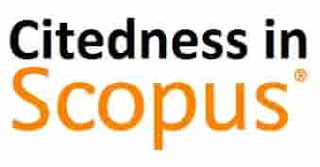E-Government Interoperability and Integration Architecture Modeling Using TOGAF Framework Based On Service Oriented Architecture
DOI:
https://doi.org/10.12695/ajtm.2018.11.1.3Keywords:
E-Government, Interoperability & Integration, Service Oriented Architecture, TOGAF-ADM, Information & Communication TechnologyAbstract
Abstract. Development of e-Government in Indonesia continues to roll and run in every government agency, both in central government and local government. Implementation of e-Government means that there are government's efforts to build and improve the quality of public services and internal operations in each regional apparatus organization effectively and efficiently. These activities inline with one of the bureaucracy reform mission, that is the modernization of government bureaucracy through the using of information and communication technology optimization to support bureaucracy reform vision and the creation of good governance. The development and implementation of e-Government currently mostly implemented by each regional apparatus organization. This condition makes it difficult to exchange data and information related to multisectoral activities due to data and information spread across various databases from different applications, platform, environment and architecture without good documentation. In preparation for arranging the e-Government architecture, we will use The Open Group Architecture Framework - Architecture Development Method as an enterprise architecture framework. The purpose of this research is to study and conceptualize e-Government interoperability and integration solutions of all existing applications and providing some model documents such as e-Government Architecture Vision, Integrated Business Model References Architecture, and Integrated Data Model References Architecture.
Keywords: E-Government, interoperability and integration, service oriented architecture, TOGAF-ADM, information and communication technology
Downloads
References
Connolly, T., & Begg, C. (2010). Database Systems: A Practical Approach to Design, Implementation, and Management. 5th Edition. Pearson Education. America.
D. C. M. Initiative and others undefined. (2008). Dublin Core Metadata Element Set, version 1.1. Pittsburgh.
Diskominfo. (2011). Cetak Biru Departemen Komunikasi & Informatika tentang Sistem Aplikasi E-Government Bagi Lembaga Pemerintah Daerah. Jakarta.
Falih, S., & Bintoro, W. (2010). Revitalisasi Administrasi Negara, Reformasi Birokrasi dan E-Governance. Yogyakarta: Graha Ilmu.
Goldkuhl, G. (2008). The Challenges of Interoperability in E-government: Towards a Conceptual Refinement. The International Conference on Information System (ICIS). Paris
Hasibuan, Z., Arifin., & Santoso, H. B. (2005). Standardisasi Aplikasi E-Government untuk Instansi Pemerintah. Prosiding Konferensi Nasional Teknologi Informasi dan Komunikasi Indonesia. ITB. Bandung
Indrajit & Richardus, E. (2005). E-Government in Action. Andi Offset. Yogyakarta.
Institute of Electrical and Electronics Engineers. (1990) IEEE Standard Computer Dictionary: A Compilation of IEEE Standard Computer Glossaries, New York.
Instruksi Presiden RI nomor 3. (2003). Kebijakan dan Strategi Nasional Pengembangan e-Government. Jakarta.
Manes, A. T. (2003). Web Services: A Manager’s Guide. Addison-Wesley. Boston USA
Peraturan Menteri Dalam Negeri Republik Indonesia Nomor 5. (2017). Pedoman Nomenklatur Perangkat Daerah Provinsi & Daerah Kabupaten/Kota Yang Melaksanakan Fungsi Penunjang Penyelenggaraan Urusan Pemerintahan. Jakarta.
Peraturan Pemerintah Republik Indonesia Nomor 18. (2016). Perangkat Daerah. Jakarta.
Setiawan, A & Ilman, B. (2012). Perencanaan Strategik Sistem Informasi pada Perusahaan Penerbitan dengan Metode Ward and Preppard: Studi Kasus pada Penerbit Rekayasa Sains Bandung. Sekolah Bisnis dan Manajemen ITB: Manajemen Teknologi, 11(3), 308-325. Bandung.
Setiawan, A & Yulianto, E. (2017). Pemodelan Arsitektur Sistem Informasi Profil Risiko Menggunakan Framework TOGAF. IAII: Seminar Nasional Sistem Informasi dan Teknologi (SISFOTEK), 1(1), 229-234, Padang.
Samudra, W. (2009). Kebijakan Publik Proses dan Analisis. Jakarta.
Scholl, H.J., & Klischewski, R. (2007). E-Government Integration and Interoperability: Framing the Research Agenda. International Journal of Public Administration, 30, 889–920
Sheth, A. P. (1998). Changing Focus on Interoperability in Information Systems: From Systems, Syntax, Structure to Semantics Interoperating Geographic Information Systems. Kluwer.
Sulehat & Taib. (2016). E-Government Information Systems Interoperability in Developing Countries: The Case of Jordan. Journal of Business and Social Review in Emerging Economies, 2(1), 39-49
Undang-Undang nomor 23. (2014). Pemerintahan Daerah. Kementerian Sekretariat Negara RI. Jakarta.
Undang-Undang Republik Indonesia Nomor 14. (2008). Keterbukaan Informasi Publik. Kementerian Sekretariat Negara RI. Jakarta.
W3C Working Group. (2017). Web Service Architecture. http://www.w3.org/TR/ ws-arch. (Accessed on 2017, March 14)
Yaseen, Muhammed & Husain, Syed. NEA Team. (2013). e-Government Program: Data Reference Model. Saudi Arabia.
http://www.opengroup.org/subjectareas/enterprise/togaf, TOGAF® - the Enterprise Architecture standard used by the world’s leading organizations to improve business efficiency (Accessed on 2017, January 19)
Downloads
Submitted
Accepted
Published
How to Cite
Issue
Section
License

This work is licensed under a Creative Commons Attribution-NonCommercial-ShareAlike 4.0 International License. Copyright @2017. This is an open-access article distributed under the terms of the Creative Commons Attribution-NonCommercial-ShareAlike 4.0 International License (http://creativecommons.org/licenses/by-nc-sa/4.0/) which permits unrestricted non-commercial used, distribution and reproduction in any medium











